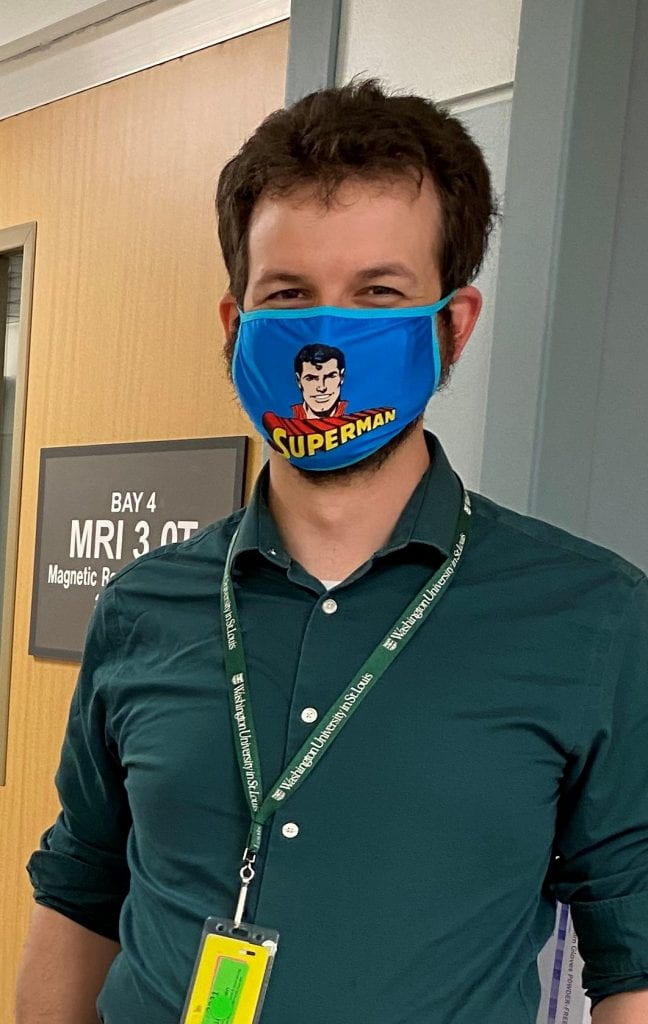Can a study visit be fun?
Sometimes it can be difficult to get excited about things we don’t understand – and sometimes, it can even make us nervous. It is important to the COMIC lab that participants, including young children and their families, feel comfortable and enthusiastic about their participation in our research studies. Because we believe that while science can be confusing at times, it can also be a lot of fun.

For our pediatric participants, the COMIC team works together to make each visit an adventure. Whether that turns the MRI scan into an astronaut’s trip through space in a rocket ship, or a scuba dive deep into the ocean, we strive to make the study a fun and relaxing experience for each child. At the beginning of the visit, children are given the opportunity to decorate their masks with markers, decorative tape, and themed stickers. Additionally, some children choose a nickname or captain’s title for their outer-space or underwater exploration. In an effort to keep children engaged throughout the visit, the research coordinator often has a bag of surprises. Prior to entering the MRI scanner, all participants may choose to watch a movie or listen to music during their scan – our movie repertoire is filled with family favorites. Then when the scan ends, our star astronaut or scuba diver can expect to be greeted by the team that made their adventure possible. And for our young adult participants who read this and think this sounds fun, we are happy to provide plenty of stickers for you as well!
Why do people participate in research studies?
Advancements in medicine and clinical care are made possible by the generous individuals who give of their time and energy to participate in research studies. While studies in the COMIC lab may not directly benefit our participants, they do allow us to gather information that can help us more fully understand and improve the health care of other children, specifically those with sickle cell disease or blood vessel changes. The more we know about brain development and structure, the better care our doctors, nurses, and health care teams can provide. For more information about becoming a research participant (in this study, or any study) at Washington University in St. Louis, please visit the Human Research Protection Office website at the link below.
What is magnetic resonance imaging (MRI)?
MRI is a type of imaging that allows doctors and researchers to see inside the body. At the COMIC lab, we take pictures of the brain. Some MRIs use intravenous contrast to view certain brain structures more easily. In the COMIC lab, we do not use intravenous contrast, allowing us to provide a needle and pain-free scan to our participants. Unlike a computerized tomography (CT) scan, MRI does not use ionizing radiation, and is safe for use in the general population. Because the MRI machine uses a magnetic field to produce images, all individuals must complete a thorough screening before being allowed to receive an MRI. For instance, some individuals with metal parts in their body may not be able to receive an MRI depending on the type of metal and its location. The research coordinator is available to discuss additional questions regarding MRI and MRI compatibility. To see what to expect during an MRI scan, please see the video demonstration at the link below.
Why do we use carbon dioxide (CO2) in our lab?
Carbon dioxide is a natural part of the air we breathe. When we exhale, our body lets go of the carbon dioxide that was once inside our blood stream and lungs. The COMIC lab uses a special mask to both measure the carbon dioxide exhaled by the participant and add a small amount of carbon dioxide the air breathed in to raise the carbon dioxide level in the bloodstream a small fraction above what it would normally be while resting. This causes the brain vessels to expand and the blood flow to increase in the brain. The effect is similar to someone walking up a flight of stairs or holding one’s breath for 10 seconds. While the carbon dioxide level may change, the oxygen levels will stay in a healthy range the entire time.
What does it feel like to wear the mask during a scan?

The RespirAct™ mask is very similar to the clear, flexible plastic oxygen masks used in hospitals. Children and young adults who have participated in our studies tell us that the masks are not uncomfortable. Many people report that they would repeat the study visit again if invited to return. However, for some individuals, the mask can add to feelings of claustrophobia while in the MRI. The mask used in our study has been tested, allows participants to breathe normally during the entire time of the scan, and is safe. In order for the mask to seal completely, participants are asked to remove facial hair and makeup prior to the study visit.
*Disclaimer: The answers to the questions above are not intended to be all-inclusive or replace or override the information provided by the study team. Descriptions of the risks and benefits of participating in our research studies will be given during the consent process with the participant, and their legal guardian (if the participant is a minor). Prior to the visit and during the consent discussion, the participant and family members will have time to ask questions about any part of the research study in order to choose whether or not to participate. Please contact the research coordinator to discuss the study procedures in detail.